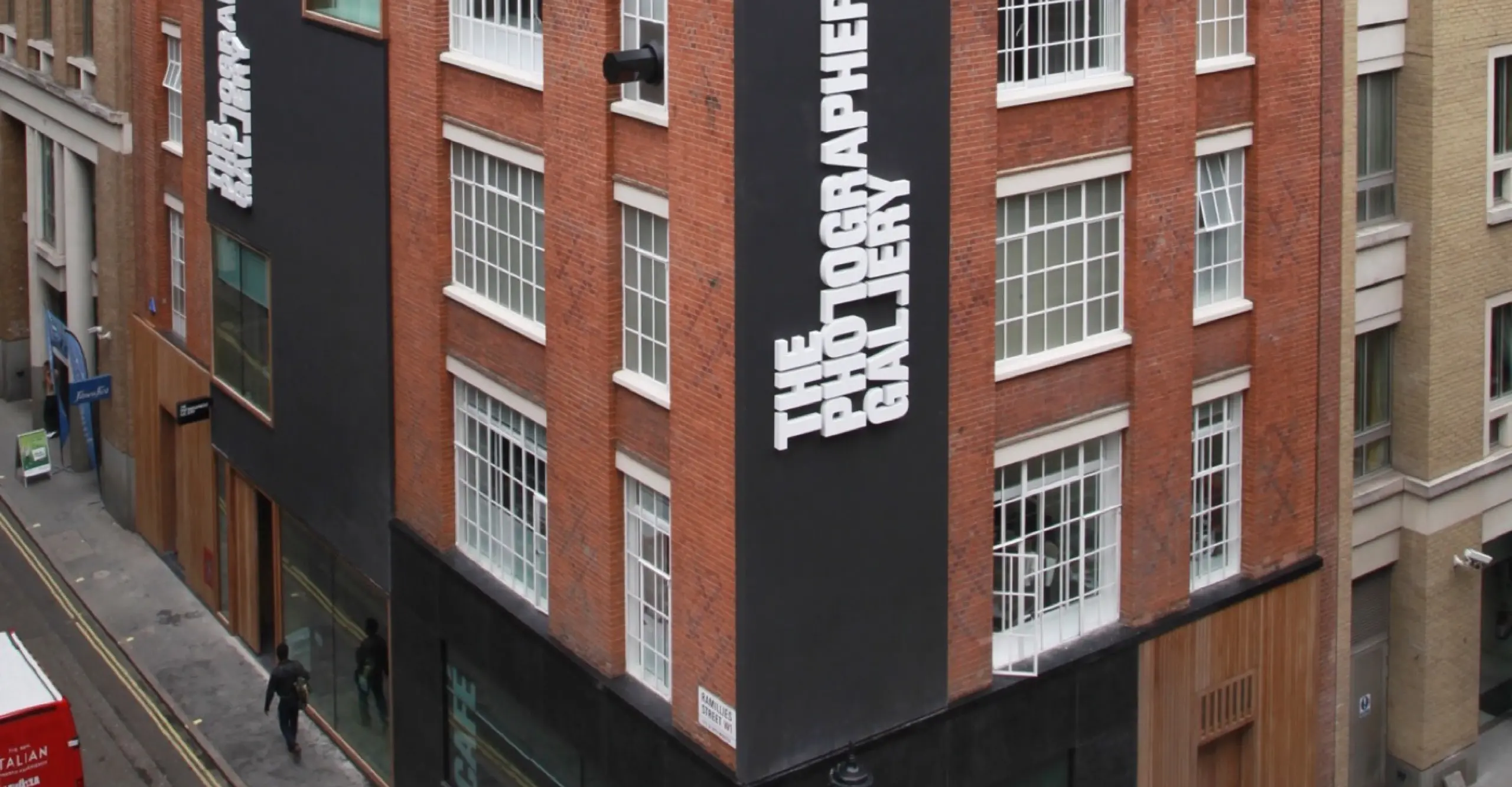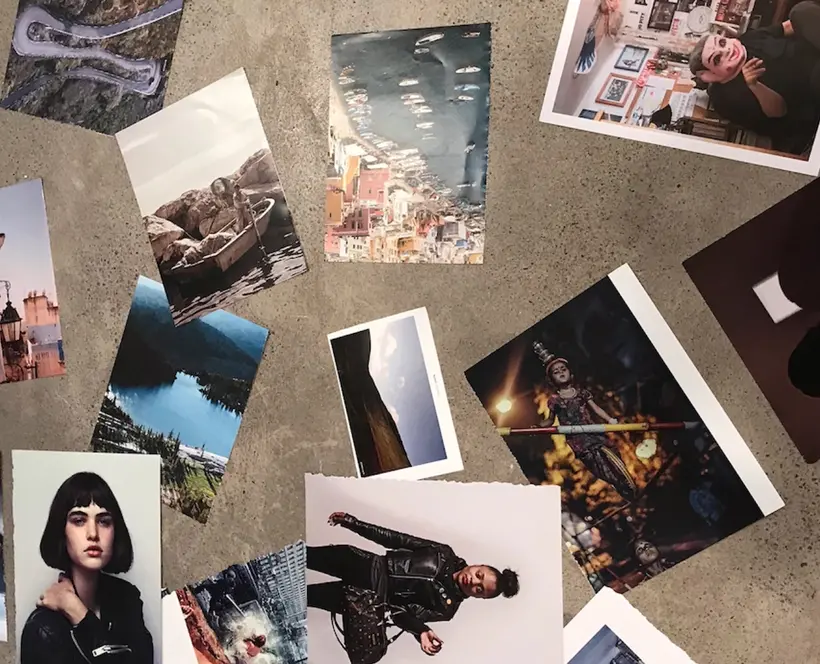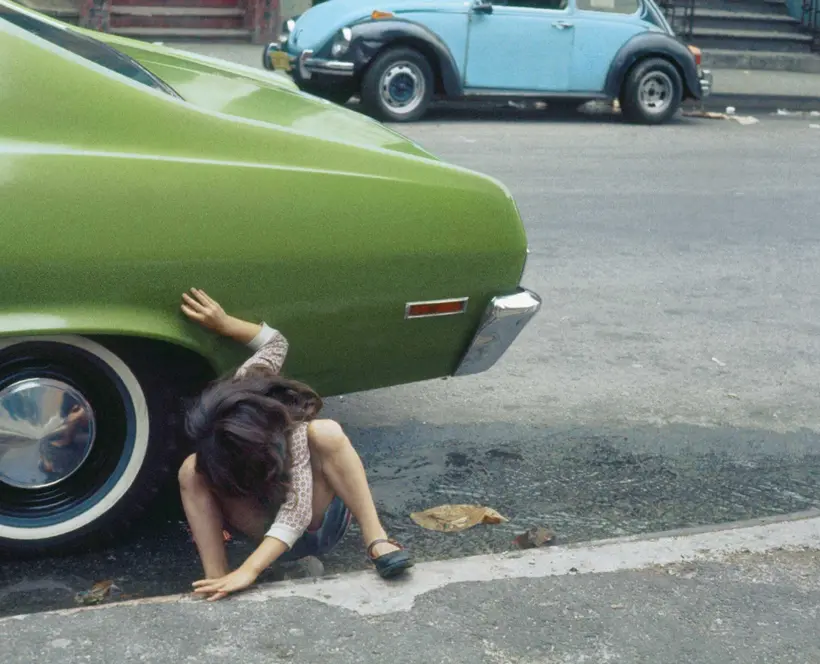Thursday 03 February at 10.00-12.00 GMT
Thursday 10 February at 10.00-12.00 GMT
Thursday 17 February at 10.00-12.00 GMT (on Zoom)
Thursday 24 February at 10.00-12.00 GMT
Thursday 10 March at 10.00-12.00 GMT
Thursday 17 March at 10.00-12.00 GMT
Thursday 24 March at 10.00-12.00 GMT
Thursday 31 March at 10.00-12.00 BST
Spanning eight weeks, this course explores the development of gallery practices and the ways they have shifted as photography has changed from being primarily considered a democratic media, and a means of personal or artistic expression, to a medium treated seriously by major art museums as well as a dominant form of online social communication. Together we will address the future of the medium, looking at new forms of arts practice and uses of media while exploring methods of display, learning, the impact of digital technology and the audience engagement.
The sessions will look across the breadth of The Photographers’ Gallery’s (TPG) public programming to ask how an arts organisation articulates its strategic vision and responds to debates about the direction photography is taking. We will consider how TPG challenges the conventions of gallery-based exhibitions and complex genealogies, widening out to new spaces and platforms for the presentation and dissemination of images, and institutional change.
We will ask how a gallery can engage with participatory and socially engaged arts practice and how it can draw on the views and experience of its audiences. We will consider how a gallery can address decolonisation and social justice through more approaches that challenge and other than the display of work. This will include strategies for how learning programmes can contribute to the way exhibitions are experienced.
Led by Dr Peter Ride and Dr Sara Dominici.
Produced in partnership with MA Museums, Galleries & Contemporary Culture at the University of Westminster
Schedule
Session 1: Navigating the Past and Facing the Future (Thu 03 Feb)
How does a gallery define its sense of purpose and goals? This session examines the role that The Photographers’ Gallery (TPG) has had in the past 50 years since it was first established. We will consider the ways in which the changing landscape of the photography sector has evolved over this time from being an ‘independent’ and radical inclusion in the arts sector in the 1970s to being well established in the 2020s. What can we learn from this history about the different ways an organisation like TPG has needed to develop and change? We will ask how an arts organisation creates strategies to operate in relation to changing cultural and social contexts. In this session we will also look at the way that a publicly funded organisation operates and the responsibilities that come with being supported by Arts Council England and other public bodies.
Session 2: Exhibition Strategies (Thu 10 Feb)
What defines an exhibition strategy? How does a gallery articulate its vision through the work it shows, commissions and supports? We will consider the range of exhibitions included in the TPG programmes from projects that spotlight the work of leading international artists, to exhibitions that review historical moments or practices, from contemporary projects on pressing themes to new commissions. We will be asking what factors determine the work that gets shown. We will look at the role of the annual Deutsche Börse Photography Foundation Prize that examines what is innovative and deserves recognition for outstanding contributions. In looking at the programme and the strategy that underlies it, we will consider the complications of creating a balance between nurturing and spotlighting of new voices, cultural diversity and new forms of expression, and presenting established names that might garner larger press and funding potential and, consequently, more numerous audiences.
Session 3: Digital media and the future of the image in its digital form? (Thu 17 Feb)
How does a physical organisation work with digital content? This session looks at digital culture and how a huge percentage of images we consume are the product of Instagram bots, computational propaganda and machine learning. The project asks how a photography gallery that comes from the modernist tradition of exhibiting individual artists can reconfigure the way it not only shows but interacts with work. We will look at the way TPG uses its display space (The Media Wall) to spotlight many of these issues and to ask questions about the ethical and social implications of technological change in image production. We will ask what ‘digital curating’ can be in what is described as a ‘post-media age’. We will also look at the way that TPG has programmed thematic exhibitions where image-making in digital culture and image ‘surplus’ can be addressed through an art historical lens.
Session 4: New Spaces and Wider Communities (Thu 24 Feb)
Practitioners are at the heart of a gallery. Practice can be supported at many levels. This session looks at the ways of engaging audiences and participants through photography-based projects taking place outside of, or away from, the gallery. We will look at the importance of working with practitioners as individuals to support their growth and development and also through partnerships with communities and groups and other external organisations. In this session we will examine the innovative partnership with Westminster City Council to create the Soho Photography Quarter as an external display space that brings the work of new and diverse photographers to city streets. We will also look at ‘The World In London’, a public art project during the London 2012 Olympic and Paralympic games. The session will also explore the growing importance of socially engaged practice and how otherwise unrecognised voices, skills and talents can be presented within the context of the gallery.
Thu 03 Mar: No class
Week with programmed activity in groups visiting other spaces and exhibitions with online feedback (guided independent study)
Session 5: Photography and the Marketplace (Thu 10 Mar)
Can the sale of photographs contribute to the breadth of a Week with programmed activity in groups visiting other spaces and exhibitions with online feedback (guided independent study)gallery’s programming and what it offers to the public? This week addresses the role of the Print Sales Gallery (PSG) and asks if it is mostly important as a revenue generating enterprise. It will also consider PSG’s function as a learning space and how it provides a different way for the organisation to support photographers. We will be looking at the ways a commercial marketplace for photography operates through individual sales and art fairs. We will ask if representing photographers commercially can create an ethical conflict of interest in a public organisation. We will also touch on PSG’s own events programmes that aim to support and engage collectors, as well as raise revenue.
Session 6: Decolonising the Gallery and Supporting Change (Thu 17 Mar)
How has TPG responded to BLM and the growing importance in the arts sector of decolonisation? In this session we will look at the objectives around diversity, decolonisation and racial awareness as they relate across all the gallery’s activities not only exhibition, including governance, audience engagement and learning. We will ask what it means for an organisation like TPG to address the way the photography sector has represented and excluded minoritarian cultural and excluded groups. We will look at the way it approaches working with practitioners and its approach to finding new constituents. We will also look at the way partnerships with other organisations and groups can enable TPG to broaden its programmes, for example Sunil Gupta’s retrospective in 2021 that explored a unique transcontinental vision of South Asian identity and queerness that presented in collaboration with Autograph ABP and the Ryerson Image Centre, Toronto.
Session 7: Interpreting the Archives (Thu 24 Mar) Is it possible to exhibit a photography archive that addresses a contemporary as well as historical context? This session will examine The Picture Library (2021), an exhibition that explored The Guardian legendary picture library and aimed to examine photojournalism across the 20th Century. The curation and display was designed to mirror the non-hierarchical nature of the library itself, in which images are filed according to ‘subject’ and ‘personality’, not by individual photographers, and images once deemed significant or newsworthy were filed alongside the obscure and forgotten. The exhibition was based around themes such as feminism, racism, industrial relations, immigration, class and the climate crisis but it also questioned if, and how, a historical review reveals unconscious biases, the use of stereotypes and ‘us and them’ narratives. Through this case study we will ask if this form of curation can enable us to consider what we have not questioned deeply enough about news photography. Conceived and co-curated by The Guardian Archive’s founder, Luke Dodd with Karen McQuaid, Senior Curator at TPG, the exhibition marked The Guardian’s 200th anniversary. We will explore the role and function of collaboration in this context and compare it with other approaches that draw on historical archives.
Session 8: Looking Slowly and Thinking Creatively (Thu 31 Mar)
This session looks at the different ways TPG invites audiences to engage with its exhibitions and how exhibitions provide a resource for educators and young practitioners. We will address how opportunities for ‘slow looking’ can be created to encourage audiences to use skills of observation. We will also look at Teen Tours, a dedicated programme aimed at giving 13-19-year-olds an opportunity to develop their critical thinking and public speaking skills through leading public tours of the exhibitions. We will also look at a range of responses audiences themselves have left behind through engaging with work within TPG exhibitions. These are all components of the TPG Education programme that aim to enhance the audience’s understanding of the exhibitions, to foster an open exchange of ideas and to learn from TPG’s audiences. We will also address how Teachers’ Sessions focus on themes included in the exhibitions to explore how photography can help develop students’ understanding of the world and increase their awareness of contemporary issues. We will also discuss how the Screen Walks programme provides a focus on digital culture through a curated series of online talks that look at the work of contemporary artists.
Biographies
Dr Sara Dominici is a historian of photography and visual culture. She is the Course Leader for the Master in Art and Visual Culture at the University of Westminster and, currently, she is also Visiting Scholar at the Photographic History Research Centre, De Montfort University (2021-2023). Her research focuses on three main intertwined areas: amateur photographic cultures; technologically-enhanced practices of mobility and vision; and photographers’ engagement with the infrastructures and networks of modernity, looking in particular at the British context in the period from the late nineteenth to the mid twentieth century. She is the author of Travel Marketing and Popular Photography in Britain: Reading the Travel Image (Routledge, 2018) and of numerous articles on the relationship between photography and modern forms of leisure.
Dr Peter Ride is the Course Leader for the Masters in Museums, Galleries and Contemporary Culture at the University of Westminster. He has worked in a wide range of arts organisations including the National Museum of Photography, Film and TV, The Photographers’ Gallery, Cambridge Darkroom Gallery, The Arts Technology Centre (Artec), London and DA2 Digital Arts Development Agency. He is the co-author, with Professor Andrew Dewdney, of The New Media Handbook (Routledge, 2006) and the Digital Media Handbook (Routledge, 2013) and he has published widely on new media projects in museums and galleries.



